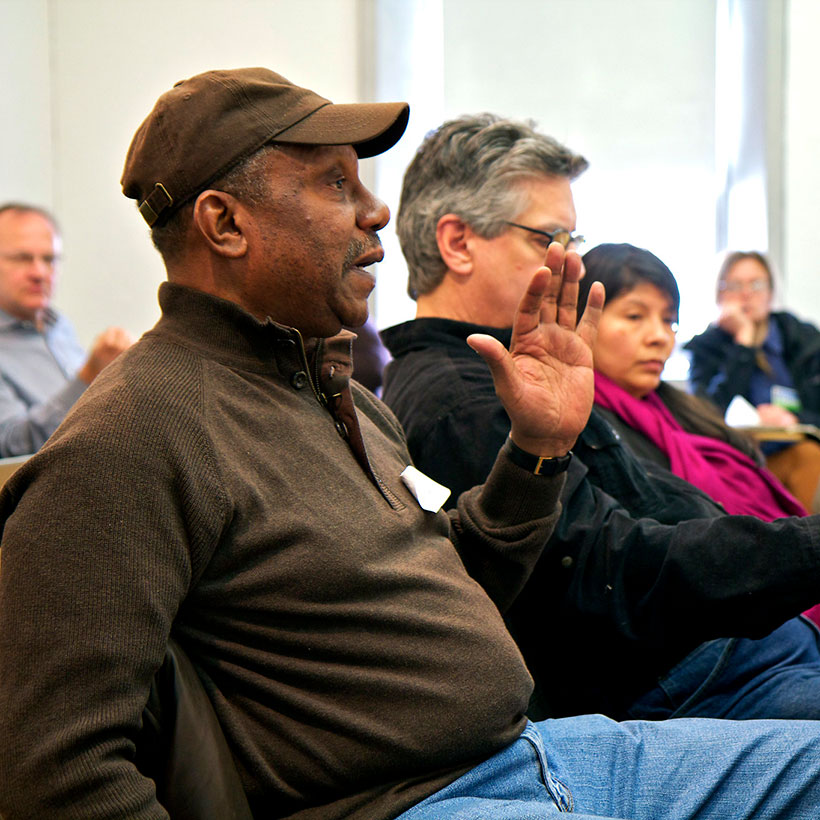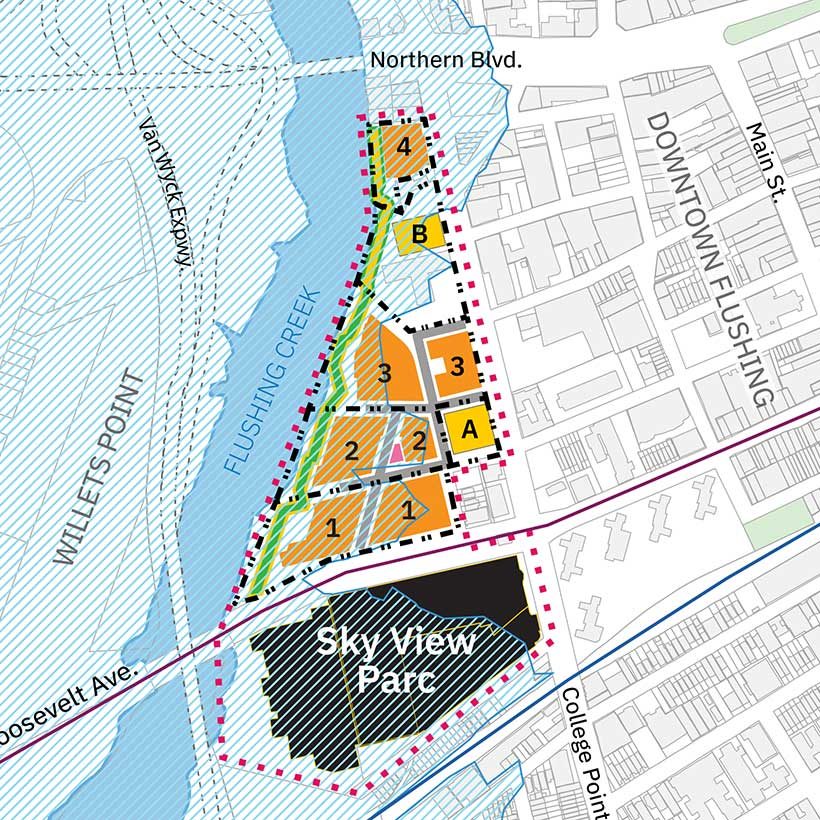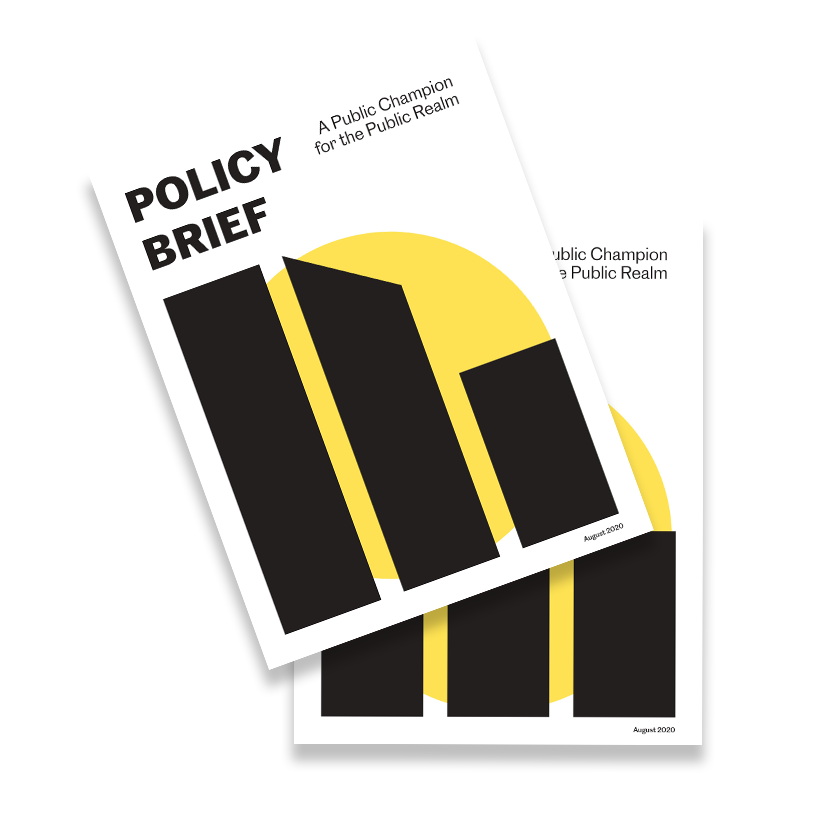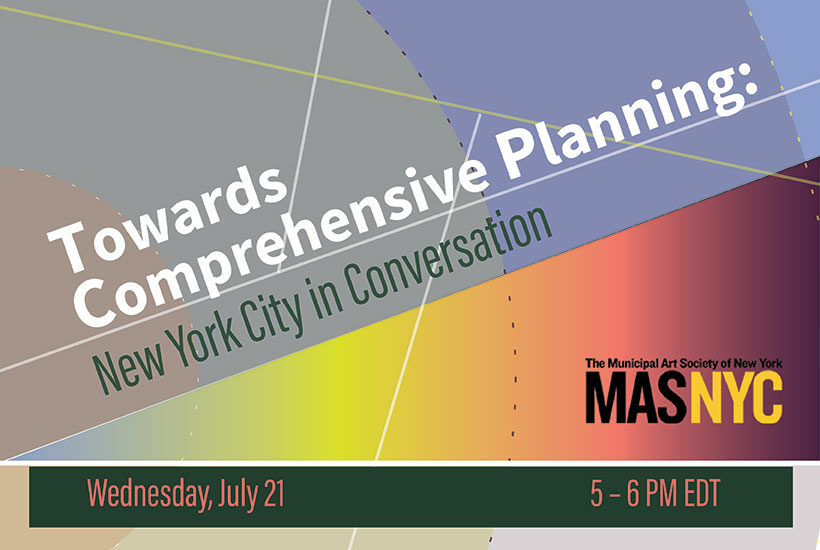Comprehensive Community-Based Planning Is Essential to Sound Land Use Policy
Testimony to the New York City Council Committee on Governmental Operations
The Municipal Art Society of New York (MAS) has long supported equitable and comprehensive community-based planning as a tenet of sound land use policy. As a member of the Thriving Communities Coalition, we share the view that comprehensive planning can make our city work for all New Yorkers. A collaborative planning process can facilitate how we move from difference to debate, and ultimately consensus. As a city of 8.5 million people with varying needs, cultures, and underlying vulnerabilities, we must continually renegotiate goals, policies, and priorities to create a shared vision for the future. When we plan together, we can effectively allocate resources and empower communities with the knowledge and opportunity to make informed land use decisions about future growth.
Speaker Johnson’s comprehensive planning framework outlined in Intro 2186 and the Planning Together report clearly reflects significant thought and effort. Many aspects of the proposal, such as adopting a citywide long-term plan, use of a Generic Environmental Impact Statement, and aligning land use decisions to budgetary considerations, are in line with our advocacy. However, as proposed, the framework leaves major land use decisions firmly in the hands of the Mayor’s Office of Long Term Planning and Sustainability (OLTPS). MAS counters that a successful comprehensive plan for New York City must balance bottom-up and top-down planning through meaningful, ongoing community engagement strengthened by effective coordination and commitment from involved City agencies. As written, Intro 2186 would reinforce the current structural imbalance in the City’s planning process.
Download Testimony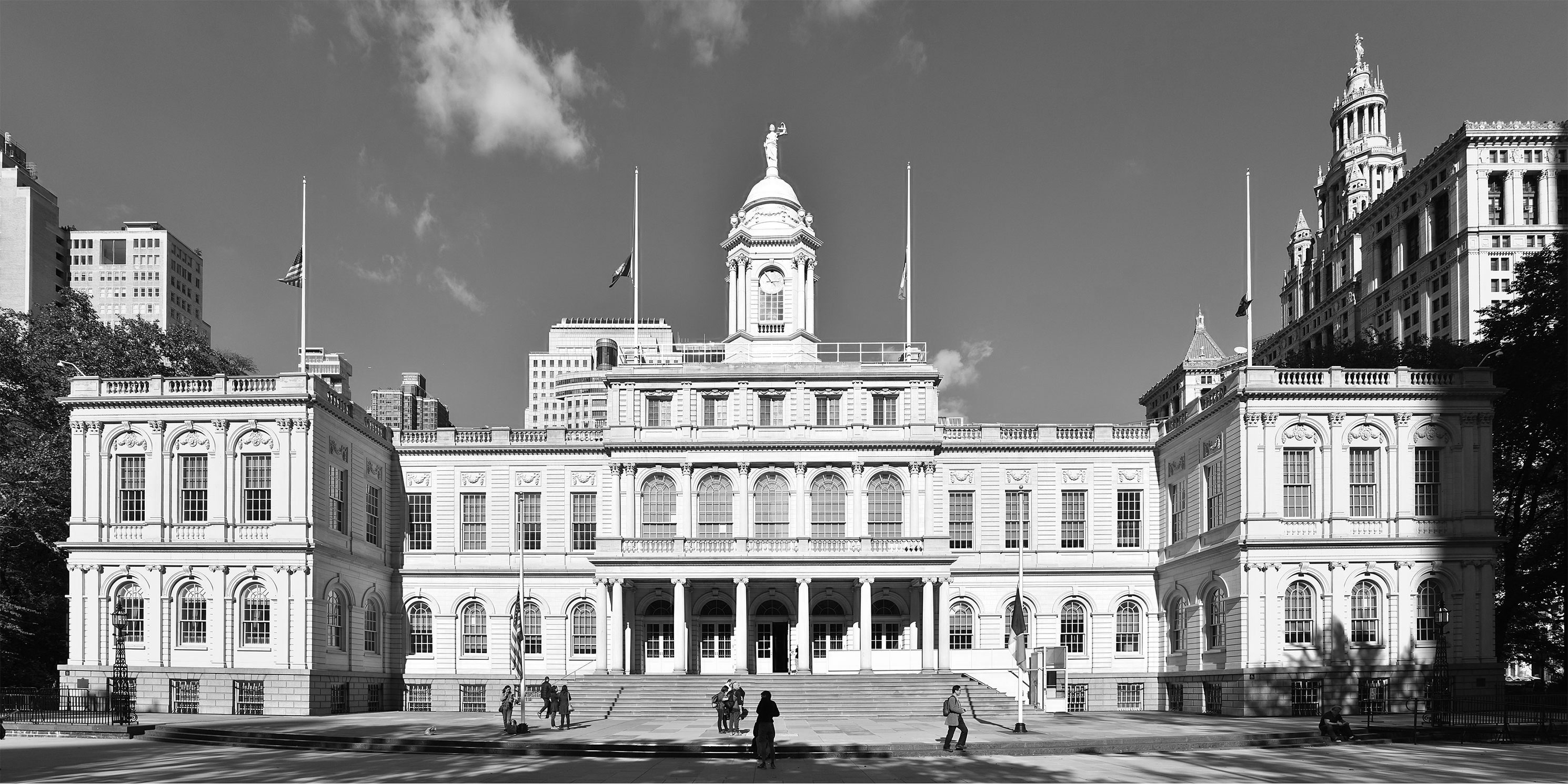
Vision for an Effective Comprehensive Planning Framework
A comprehensive plan is a set of documents that frame targets throughout the city, from how and where we grow, to how we meet local community needs and enable those neighborhoods to thrive. A comprehensive plan allows communities and the City to coalesce around a shared vision while also creating space for healthy debate. An effective comprehensive plan addresses infrastructure, schools, open space, transit, historic preservation, resiliency, sustainability, as well as pervasive socioeconomic and racial disparities. Such a plan must consider issues at the community, county, city, and regional levels, and coordinate with the Capital Budget.
MAS agrees that the City’s current planning process lacks transparency and does not adequately engage communities when shaping the future of their neighborhoods. Planning and land use decisions are disconnected from capital budgetary considerations, resources are not allocated equitably, and City agencies involved in land use decisions fail to coordinate sufficiently. Consequently, public engagement in the City Environmental Quality Review (CEQR) and the Uniform Land Use Review Procedure (ULURP) processes is largely ineffective because the community enters the conversation too late, as evidenced by the contention surrounding recent neighborhood rezonings.
Though the City Charter Revision Commissions of 2018 and 2019 were not successful in instituting major land use process reform, MAS still believes that true comprehensive planning is most effectively accomplished through changes to the City Charter. Without this, the current power imbalances inherent in ULURP will remain, leaving input from Community Boards and Borough Presidents as purely advisory.
To the extent that this bill can bring real change, MAS believes it must be structured to advance meaningful, ongoing public engagement to improve the balance of power in the land use process. The bill must account for community input from the early stages of citywide goal setting and policy decision-making, to the actual implementation and mitigation procedures in the land use process. We urge the City Council to consider the following comments and recommendations to create a more coordinated and equitable planning framework.
Comments and Recommendations for Improving Intro 2186
Provide Adequate Resources and Representation to Communities
First, and most importantly, the bill leaves little room for communities to proactively shape the goals and policies that will affect their neighborhoods. For instance, early significant planning milestones, such as the Conditions of the City Report and Citywide Goals Statement, are developed and implemented by the OLTPS and the Long-Term Planning Steering Committee with only one public hearing mandated in each borough, respectively. It is not enough to mandate a single hearing for the purpose of securing legitimacy in the planning process; this will further solidify distrust among communities.
To better balance citywide goals and community needs, the bill must mandate a protracted program of community engagement meetings, in a variety of formats, in each Community District prior to determining major milestones. The bill must also meaningfully include and consider community-based plans and 197-a plans. To comply, the Civic Engagement Commission should be responsible for developing consultation plans for each neighborhood to ensure language access, reach, and accessibility. These plans should be subject to an approval vote by the Community Board. This would increase the Commission’s reach and better include communities in government and decision-making.
In addition, Community Boards and Borough President offices must have access to equitable and sustained resources, such as ongoing funding and land use planning staff, to better prepare for community engagement and development of potential land use scenarios. Furthermore, this bill must account for other community engagement mechanisms beyond the standard public hearing format, such as interactive community mapping tools. Digital tools can be impactful in bringing planning processes to scale and increasing access to data. Yet these tools, on their own, are restrained in their ability to reach individuals with limited web access and English language proficiency. For these reasons, community organizations must also be resourced to bring in local experts and facilitators.
Lastly, the bill fails to ensure that the Borough Steering Committees actually reflect the communities they will represent. As written, the Long-Term Planning Steering Committee, a body appointed by elected officials, selects an unspecified number of members for these Committees. Instead, we recommend that each Community Board in the borough elect a member to the Borough Steering Committee (representation on Community Boards is addressed in a later section). This would provide community members with a say in the planning process rather than concentrate decision-making at the Mayoral level.
Create Balanced Growth Priorities Citywide
If approved, Intro 2186 would “prioritize population growth, where applicable, in areas that have high access to opportunity and low risk for displacement.” MAS agrees that the city needs to grow equitably, with each neighborhood responsible for absorbing their fair share of new New Yorkers. However, that will not be possible unless all of the parties—from communities to the City Council—feel empowered by the process of engagement and as though they own both the citywide goals and how they are met. This is in part about the process before and after adoption. If the comprehensive plan is truly the result of respectful compromise between community priorities and citywide needs, then it should be adhered to as the rule and not the exception. Currently, the proposal does not place sufficient emphasis on the ways that specific development projects that work within the plan will be incentivized, and more importantly, how those that do not will be discouraged.
Define Agency Involvement to Improve Coordination and Commitment
MAS is encouraged by the effort to increase agency and stakeholder coordination in the planning process, such as consolidating reporting and creating shared data. However, it is imperative that the bill recognize the lack of trust that is currently infused in the city planning process and seek to systemically correct for it. To do so, we believe this proposal must be strengthened to further improve agency commitment and coordination.
Most importantly, given its critical role in planning and zoning, we are apprehensive about how the Department of City Planning (DCP) and the City Planning Commission (CPC) fit into this framework. The roles and responsibilities of DCP, CPC, the Landmarks Preservation Commission, the Economic Development Corporation, and other agencies must be clearly defined in the bill going forward. For example, the bill should utilize and build upon existing links between local agencies, Community Boards, and neighborhood organizations. Without defined agency roles, dialogue, and joint support, the planning process will continue to be poorly coordinated and communities will continue to be disenfranchised in the land use process.
Develop New Tools for Broad Knowledge and Transparency
To ensure that everyone participating in the development of a comprehensive plan have access to key information, new tools and databases should be developed. As the bill is currently drafted, the Conditions of the City Report omits key citywide assessments that are essential to truly comprehensive and coordinated planning. In addition to the analysis of overall changes in demographic data already required in the Conditions of the City Report, it must include a needs assessment of all Community Boards to improve future decision making. This assessment should study current Community Board demographics and representation, funding, and a resource and staffing inventory assessment. Additionally, current system-wide infrastructure plans, like the freight master plan or comprehensive waterfront plan, should include inter-agency coordination and decision-making. The bill must also expand current citywide assessments and commit to updating the City’s historic resources inventory, strengthen the link between climate resiliency planning and environmental justice, and promote fair housing and long-term NYCHA improvements. The bill should also clarify how a coordinated planning process will connect with CEQR reform and a Racial Impact Statement.
The bill should also provide a mechanism to translate goals and policies to an interactive map that can function alongside the Zoning Map and Zoning Resolution. Other cities, such as Seattle and Austin, have Future Land Use Maps (FLUMs) which identify areas that would be subject to change according to adopted growth strategies. A FLUM allows applicants and City officials to evaluate how an individual land use application aligns with the comprehensive plan. If a land use application does not align, the comprehensive plan must be changed. The bill currently requires all projects to be evaluated for alignment, but projects that do not align could still be voted through. A FLUM would provide more thorough evaluation of projects that are inconsistent with the adopted plan.
Strengthen Legislative Outreach
This bill will have a significant impact on land use planning in New York City, and is extremely complex. Therefore, MAS urges the Speaker’s office to strengthen its outreach efforts and clarify proposed processes. City Council members and their staff must proactively reach out to local organizations, Community Boards, elected officials, and City agencies to gain and implement feedback as much as possible.
We also encourage City Council to prioritize components of the legislation that could be forwarded independently or as a smaller package of bills. These could include increasing the depth and frequency of existing agency reports, requiring additional agencies to conduct in-depth reports, and aligning these reports to reduce staff and study time.
Conclusion
Given the vast scope of crises we face today—racial and social injustice, the COVID-19 pandemic, budgetary shortfalls, and the existential threat of climate change—the time is ripe for a fundamental shift in how New York City plans for its future. With the upcoming election, it is imperative that we engage in a proactive conversation about how these challenges can be addressed in the context of a long-term vision for New York City.
While MAS believes that true community power in the City’s land use decision-making process would be best achieved through revision to the City Charter, we are encouraged by the concept of a comprehensive planning framework. We do not think New York is so unwieldy and vast that comprehensive planning efforts are doomed to fail. However, the proposed bill must give communities more authority in the City’s land use process. MAS will continue to outline specific recommendations as this process unfolds and looks forward to working with the City Council toward a more equitable future.

